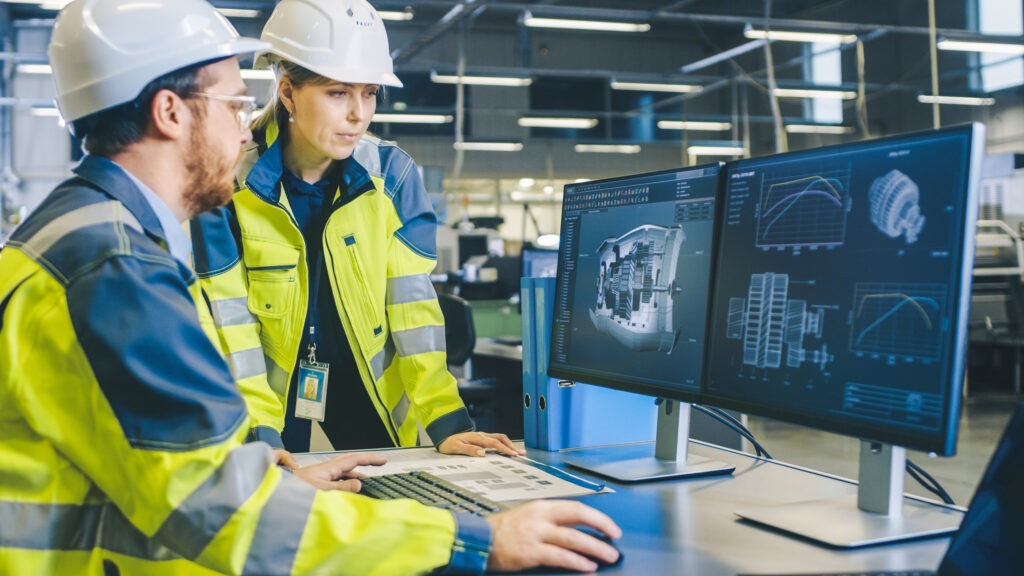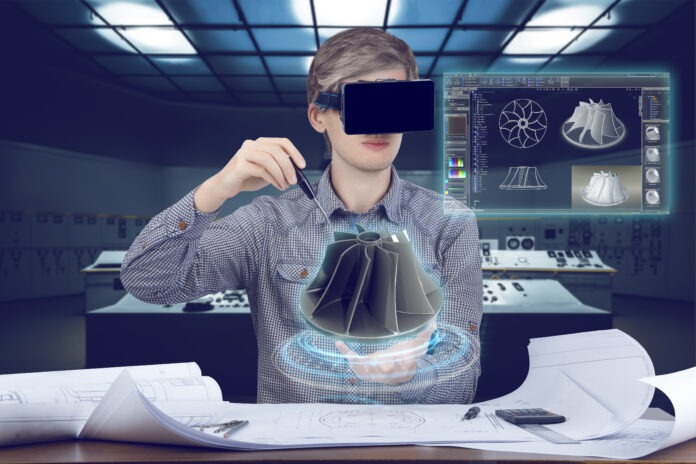Technical design has been an integral part of the industry since its conception as a productive organization, as technical design is the link between the design department and production. In this article we will shed some light on the world of CAD -CAM – CIM systems and the world of technical design.
CAD (Computer Aided Design)
The design prepared with predetermined patterns means that the information is quickly communicated to the rest of the factory, providing the creation of the idealized product, with greater speed. For this reason, coupled with the great evolution of processing power and the drop in computer prices, the number of professionals using CAD as a work tool is increasing every day. However, it is noted that most of these people use CAD only for drawing, and the power of CAD systems allows, in addition to manipulation and integration of information, to design projects through representation in three dimensions, enabling different forms of vision and project design and reducing the possibility of errors due to inconsistencies.

CAM (Computer-aided manufacturing)
CAM is the design of the production process of items on digitally guided machine tools. Objective of CAM software: Its creation digital mentoring program. The digital guidance program written using appropriate commands, which define the movement of the cutting tool in space, for the production of its geometry piece CAM software provides definition of the production process of pieces, through its definition of processing parameters in software in a high work environment (options windows, tabs, high lab, etc.). Then the user options are translated into the digital program through the final process processing (post processing). The drafting of the program is very important for the digital guidance, which differs in each machine tool model, although the basic one of the programming commands are common among maces.
CIM (Computer Integrated Manufactured)
The new concept was the Integrated Computer Science (CIM) that is considered a natural evolution CAD / CAM technology which in itself evolved with the integration of CAD and CAM. Massachusetts Institute of Technology (MIT, USA) is credited with the pioneer development in both CAD and CAM. The need to cover design and construction requirements of the aerospace industries after World War II development of these technologies. Construction technology is available in the late 1940s and in the early 1950s could not meet the design and construction challenges that arose need to develop advanced aircraft and satellite launchers. That pushed the US Air Force will approach MIT to develop appropriate control systems, movements and scheduling machine tool techniques with electronic control. As we understand for the follow image, computer integrated manufacturing (CIM) is the manufacturing approach of using computers to control entire production process. This integration allows individual processes to exchange information with each part. Manufacturing can be faster and less error-prone by the integration of computers.
Implementation and Software Tools for CAD/CAM/CIM
We have a series of many options of the main CAD programs, such as AutoCAD & Mechanical Desktop, ProEngineer, Catia, SolidWorks and I-DEAS or NX-IDEAS. Furthermore, examples of CAM software are SolidCAM and CAMWorks.
Many small but mainly industrial companies use CAD CAM CIM technologies. There are applications from many years ago in the automotive industry, in dentistry, in the chemical industry, as well as in aeronautics where there were initial approaches of CAD/CAM. The rapid development of software through information technology, these technologies have evolved and been combined with rapid 3D printers as well as robotics. One of the most interesting areas that includes all the knowledge about the idea of a product (any item-product for mass production) and its application is industrial design.
The future CAD/CAM/CIM
CAM now plays the most important role in all operations of a production unit, including design, management, transportation and storage. Technological developments make this possible by combining data acquisition, CAD, CAM, CIM and product delivery.
It is certain that in the future of CAM, more complex factors will be introduced. Monitoring and troubleshooting, components and systems will self-diagnose and predict themselves, providing more information on the state of the process and providing self-healing and flexible solutions.
Eventually we will have a combination of technologies such as artificial intelligence, augmented reality, self-monitoring with simultaneous correction of errors and failures that will give us the end result almost perfect or with a negligible error rate.



